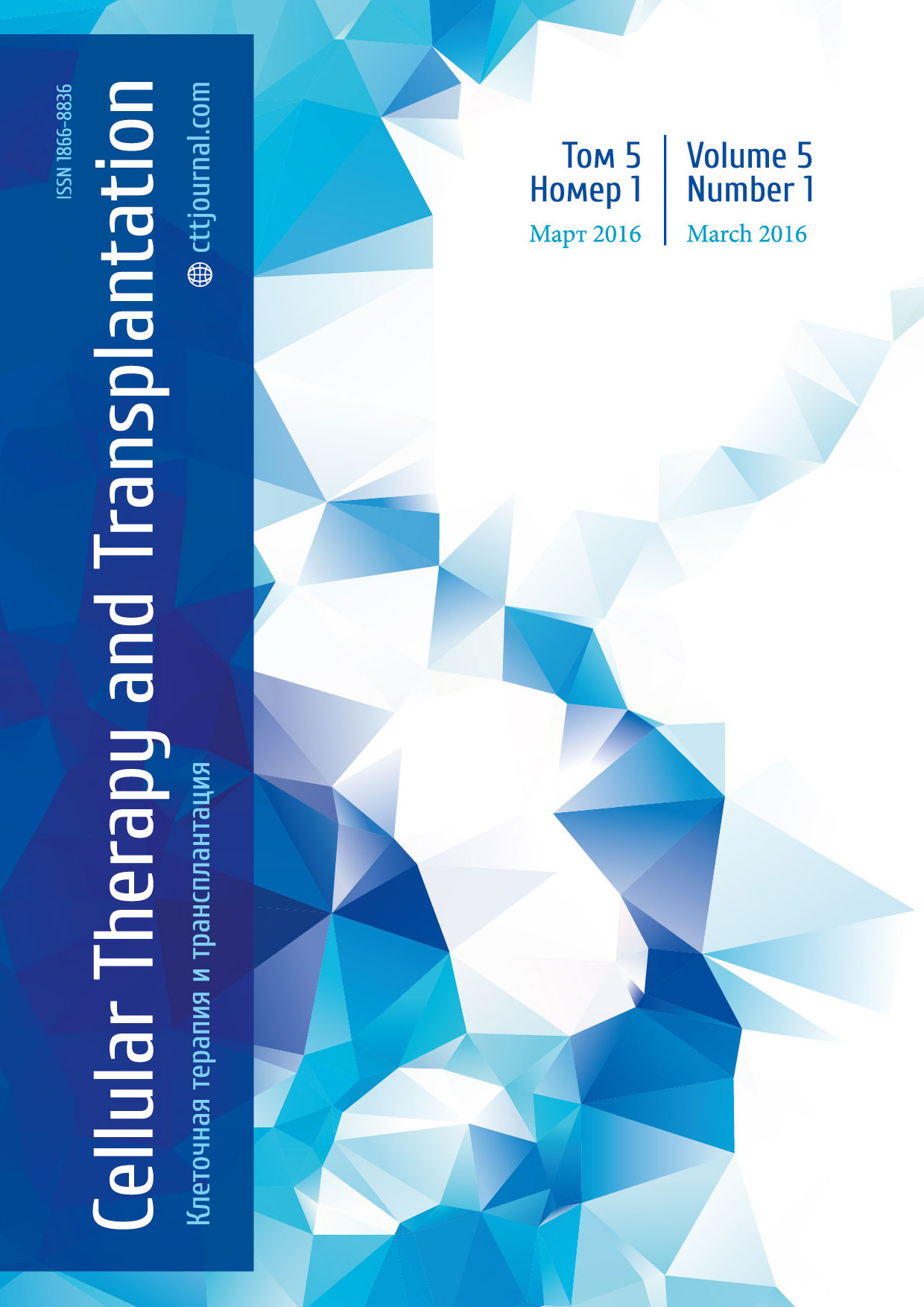Chimerism analysis after allogeneic hematopoietic stem cell transplantation as a prognostic factor of relapse in hematopoietic malignancies in children
Victoria A. Lavrinenko, Yulia E. Mareiko, Tatsiana V. Savitskaya, Mikhail V. Belevtsev, Olga V. Aleynikova
Belarusian Research Center for Pediatric Oncology, Hematology and Immunology, Minsk, Belarus
Summary
Introduction
Allogeneic hematopoietic stem cell transplantation (alloHSCT) has become an important treatment method for many hematopoietic malignancies. Relapse of the underlying disease after alloHSCT remains the most common cause of transplantation failure. It has been shown in many studies that the patients with hematopoietic mixed chimerism (MC) were at higher risk of relapse after alloHSCT. MC was recognized as an important predictor of relapse and can serve as an index for preventive immunotherapy administration which may cause improvement of treatment outcomes in the high-risk patients after alloHSCT. In the majority of studies, the chimerism analysis had a sensitivity of 1 to 5% and depended on the method of its registration. Moreover, there are no exact threshold chimerism values for individual relapse prediction. The aim of this study was to evaluate hematopoietic chimerism in patients after alloHSCT and to determine the threshold chimerism levels which may predict relapse.
Patients and Methods
We have studied chimerism levels in 51 patients with malignant diseases, following 54 HSCT (three patients received 2nd HSCT). The patients with various oncohematological diseases (acute lymphoblastic leukemia, acute myeloid leukemia, myelodysplastic syndrome, non-Hodgkin lymphoma) underwent allogeneic HSCT at the age of 0,6-29 (a median of 10 years old) between May 2009 – May 2015. The chimerism evaluation was performed by polymerase chain reaction of short tandem repeats (STR-PCR) with commercial AmpFlSTR® SGM Plus® PCR Amplification Kit (Applied Biosystems), and capillary electrophoresis (sensitivity 1 to 5%). The samples were taken at the days +30, +45, +60, +80, +100, +140, +180, +245, +365, and bi-annually at later terms. At the chimerism levels of 97-100%, the result was confirmed by a more sensitive method (±0,01%) using real-time PCR detection of insertion/deletion polymorphisms (InDel-PCR). The samples collected at the time of documented relapse and afterwards were excluded from the main analysis.
Results
We determined background levels of recipient DNA in the samples after alloHSCT in 40 patients with successful engraftment, stable chimerism values, or decreasing MC in absence of relapse. The appropriate range of donor chimerism (DC) was 99,0 to 100% on D+30 and 99,7 to 100% at later terms (90th percentile). The DC of 99,7% was established as the threshold value which may be predictive for a relapse. The detectable chimerism levels following alloHSCT could be classified as follows: Mixed chimerism (MC) of >99% on day +30 and very low MC levels at later terms 99,7-100%, n=36; 3 relapses (group A); MC of >99% on day +30, and MC on subsequent days 99,7-100%, with episodes of DC<99,7%, n=9, 6 relapses (group B); MC of<99% on day +30, and decreasing MC on later terms reaching DC of >99,7% on day+45 to day+100, n=3, relapse-free (group B); MC on day +30<99%, then decreased MC on subsequent days, however, not reaching 99,7%, followed by increase in recipient cells, n=1, relapsed (group B); MC<99% on the day +30, followed by increased MC and graft rejection, n=1, relapse-free (high-level minimal residual disease); no engraftment, n=2, 1 relapse. Two patients were not included into analysis, since they had no available markers for InDel-PCR, they exhibited 100% of DC by STR-PCR. According to the individual chimerism dynamics, we have classified the patients as follows: group A – patients with DC >99,7% including those with decreasing MC who reached DC level >99,7% and group B – patients with DC<99,7%, including those with decreasing MC not reached DC level 99,7%. There were 39 alloHSCT patients in group A. Only 3 patients (7,7%) relapsed on the days +195, +255 and +1184. In two cases (relapsed after 200 days) we couldn't predict an impending relapse, due to long time between last DC testing and relapses (>68 days). The patient who relapsed on day +195 received a highly intensive immunosuppression because of treatment complications. Group B consisted of 10 alloHSCTs, with relapse in 7 cases (70%). The time period between relapse and MC increase (DC<99,7%) was 1 to 41 days (a median of 28 days). In two relapse-free children, a reconstitution of DC to >99,7% was observed at later terms, unlike relapsed patients who exhibited increase in recipient cells. The third patient (without relapse) died from the therapy complications at the DC level of 92,9%. There were significant higher probability of relapse in group B (with DC level<99,7%), as compared to the group A patients with DC >99,7% (p=0,0001). The two-year EFS was 16,9% for group B and 93,6% for group A (p=0,00001).
Conclusions
Analysis of chimerism in the patients with hematopoietic malignances requires more sensitive methods (InDel-PCR) than the "golden standard" STR-PCR, in order to predict a developing clinical relapse. Those patients who have not reached chimerism level >99,7%, or showed a reduced DC level of<99,7% after alloHSCT, were at higher risk of relapse. A more frequent chimerism monitoring is recommended for this group of recipients.
Keywords
Children, hematopoietic malignances, allogeneic hematopoietic stem cell transplantation, relapse, chimerism


